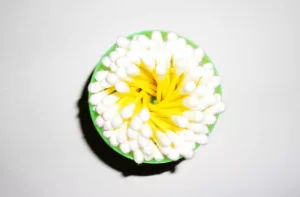Beauty’s Disposable Dilemma

In our fast-paced world, convenience often takes center stage in our daily routines. When it comes to beauty, single-use products offer the allure of simplicity and immediacy. However, while these products may seem like a time-saver, there are hidden costs that extend beyond the immediate gratification they provide. In this blog, we’ll delve into the hidden environmental, financial, and even health costs associated with single-use beauty products.
Single-use beauty products have undoubtedly revolutionized the way we approach our daily routines. From makeup wipes to sheet masks and individually packaged skincare samples, these products offer unparalleled convenience. With just a quick tear, swipe, or application, we can achieve our desired look or skincare benefits without much fuss.
However, it’s essential to recognize that this convenience often comes at a price – a price that goes beyond what we see on the price tag.
1. Environmental Impact
Perhaps the most significant hidden cost of single-use beauty products is their environmental impact. Many of these products are designed for one-time use, which means they generate a staggering amount of waste. Here’s a closer look at some of the environmental concerns:
Plastic Pollution: Most single-use beauty products are made of plastic materials that take hundreds of years to decompose. These plastics often end up in landfills or, worse, in our oceans, harming marine life and contributing to plastic pollution.
Excessive Packaging: Single-use products tend to be excessively packaged, with each item individually wrapped or encased in additional plastic or foil. This not only increases waste but also consumes more resources in the manufacturing process.
Carbon Footprint: The production, transportation, and disposal of these single-use items contribute to greenhouse gas emissions, further exacerbating climate change.
2. Financial Costs
While single-use beauty products may appear affordable on an individual basis, their cumulative costs can add up significantly over time. Consider this: a pack of disposable makeup wipes or sheet masks may seem budget-friendly, but when you calculate the annual expenditure on these products, the numbers can be eye-opening.
3. Health Concerns
Beyond the environmental and financial costs, there are also potential health concerns associated with certain single-use beauty products:
Harsh Ingredients: Some single-use products, especially makeup wipes, may contain harsh chemicals and preservatives to extend their shelf life. Prolonged use of such products can lead to skin sensitivities and irritations.
Limited Efficacy: In some cases, single-use products may not be as effective as their longer-lasting counterparts. Sheet masks, for example, may offer only temporary hydration, and their benefits may not be as long-lasting as a quality moisturizer.
Hidden Allergens: Individually packaged samples often lack ingredient transparency, making it challenging to identify potential allergens or irritants that could trigger skin reactions.
Alternatives to Single-Use Beauty Products
Now that we’ve explored the hidden costs associated with single-use beauty products, it’s time to consider alternatives that offer both convenience and sustainability.
1. Reusable and Eco-Friendly Alternatives
Cotton Reusable Rounds: Replace disposable cotton pads or makeup wipes with reusable cotton rounds made from sustainable materials like organic cotton or bamboo. These can be easily washed and reused multiple times.
Muslin Cloths: Muslin cloths are excellent for cleansing and exfoliating. They can be washed and reused, reducing the need for disposable wipes.
2. Multi-Use Products
Opt for multi-use beauty products that offer versatility and longevity. For instance:
Cleansing Oils: A high-quality cleansing oil can remove makeup, cleanse the skin, and even act as a moisturizer, eliminating the need for separate makeup removers and cleansers.
Tinted Moisturizers: Tinted moisturizers combine skincare and makeup, providing hydration and coverage in one product.
3. DIY Beauty Solutions
Consider do-it-yourself (DIY) beauty solutions that allow you to control the ingredients and reduce packaging waste. For instance:
Homemade Face Masks: Create your own face masks using natural ingredients like honey, yogurt, and oatmeal. Not only are these customizable, but they also reduce the need for single-use sheet masks.
DIY Makeup Removers: Make your makeup remover using gentle oils like jojoba or almond oil, which are effective at breaking down makeup without harsh chemicals.
4. Sample Swaps and Refillable Options
Instead of purchasing individually packaged samples, explore brands that offer sample swaps or refillable options. Many eco-conscious brands are embracing refillable packaging, reducing waste and offering cost-effective solutions.
5. Mindful Consumption
Lastly, practice mindful consumption by carefully considering whether a product is necessary before purchasing it. Do you genuinely need that one-time-use sheet mask, or can you achieve similar results with your existing skincare routine?

While single-use beauty products may offer immediate convenience, they come with hidden costs that extend far beyond their apparent benefits. The environmental impact, financial burden, and potential health concerns associated with these products make it essential to reconsider our choices.
By exploring eco-friendly alternatives, embracing multi-use products, and practicing mindful consumption, we can enjoy the convenience of beauty routines while minimizing the negative impacts on our planet, wallets, and well-being. It’s time to prioritize sustainability and make choices that benefit both ourselves and the world we live in.




